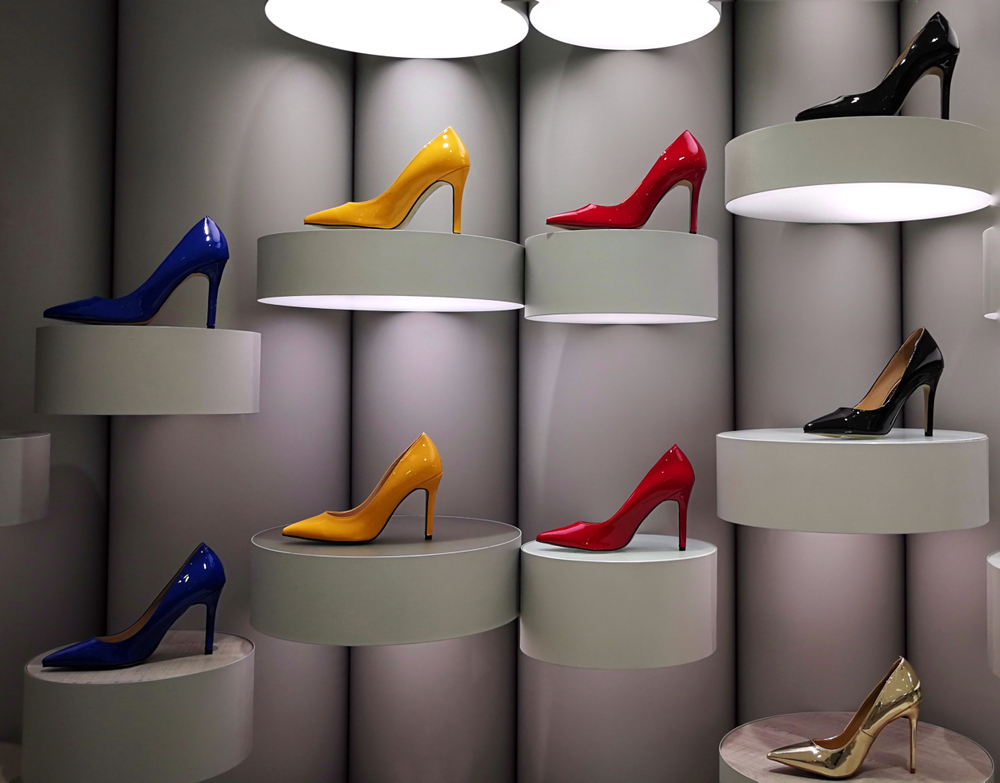The pandemic impacted nearly every space and aspect of life, least of all the commercial and retail space. The retail space especially has undergone a drastic change over the past decade. With the advancement and convenience of technology, most people prefer the comfort of shopping from home. In fact, as many as 76 percent of customers in the United States prefer to shop online. With the hit of the pandemic, when the world was contained within their homes, online shopping became less of a preference and more of a requirement. In the coming years, this number is only expected to increase.
For retail spaces, online shopping poses strong competition. In the age when people are used to convenience above all else, retail spaces need to emphasize optimization of design and customer experience more than ever. In contrast to the 76 percent that prefers to shop online, 46 percent of customers still prefer the experience of physically shopping in a store. Despite the shift in attitudes of customers, physical retail space is not going anywhere. Instead, retail owners need to focus more on retail space planning in Las Vegas.
How to Keep A Retail Space Attractive to Customers
One way to keep the experience of physically shopping enchanting to customers is by staying ahead of the competition while maximizing the limitations of online shopping.
The Art of Brand Storytelling
Brand storytelling is somewhat of a dismissed artform. A customer experience when it comes to retail spaces is not just limited to browsing through products and walking around the store. According to an article published in Forbes 3 Reasons Why Brand Storytelling Is The Future of Marketing, brand storytelling is the creative narrative that connects the facts and emotions that a brand elicits. Brand storytelling hints to the customer about a business’ mission, vision, and history. When a brand tells its story well enough, it can build a more loyal and committed customer base by creating a bigger impact.
The need for impact in an age where attention spans have been scientifically proven to be short and getting increasingly so begs the question: how is a retail space supposed to achieve compelling brand storytelling?
Effective brand storytelling heavily relies on the visual aspect of retail space. Understanding what visuals will create the biggest impact entails understanding the target demographic or audience of the store. A business geared towards an older age group cannot (and should not) rely on the loud, bright visual aspects that a business targeting a teenage demographic will use. Often, businesses will chase whatever is currently trending, but to stay trendy and “of the times,” they may forgo their authenticity. Effective storytelling includes the use of visuals that support the authenticity of the brand, which makes the in-store experience more meaningful.
Increasing Interactiveness of the Shopping Experience
This is one area where online shopping might challenge the in-store shopping experience the most as technology has come up with increasingly innovative ways to allow businesses to interact with customers.
Interactiveness inside the store can be increased by finding creative ways for customers to engage with the products and putting thought into the store’s design.
Customers choose to go to a store when they can shop physically with more real interaction with the products and the business at large. This includes the feelings of being inside a store. A retail space needs to nurture feelings of safety and comfort without compromising on an entertaining experience. Retail spaces such as home decor or makeup stores create displays that customers can touch or interact with in any capacity.
Using Technology to Create an Enhanced Customer Experience
Ironically, suppose the advancement of technology has created a larger preference for online shopping and greater competition for retail stores. In that case, technology can also be used by physical retail stores to create a better customer experience.
Technology can be used to provide entertainment, as well as convenience. One example of how technology has made the customer experience more convenient is in the commercial space. QR codes have quickly gained popularity, and many restaurants have stopped holding onto menus at all. Instead, visitors can simply scan the code on their phones and have everything they need in their hands.
Using technology, music, lights, and displays can be elevated in a retail space. Regardless of the target, demographic, or aesthetic a brand is trying to project, there is a way for technology to be used to aid the brand storytelling within a physical space. Many businesses have begun playing faintly audible videos on large display screens that are mesmerizing enough for passersby to give the store a chance or, at the very least, pause for a moment to pay attention.
For stores that may be having trouble keeping up with the quickly changing trends, relying on professional help might be the most efficient way to retain the interest of customers. Whether it’s retail or commercial design in Las Vegas, a retail or commercial interior design firm in Las Vegas is specially equipped with the expertise to maximize space. With better planned and designed spaces, a business is proven to experience a growth in sales. An efficient commercial interior design firm in Las Vegas can build a unique design and plan for a business. A custom plan that conveys the authenticity of a company reliably can grow the size of the business’s loyal customer base by leaving a lasting impression.
A well-designed space does not just help the customer experience; it also boosts employee morale and productivity. Employees are an integral part of an in-store customer experience. Naturally, high employee morale can lead to more fruitful interactions between customers and employees, and ultimately, the customer experience is affected positively.
